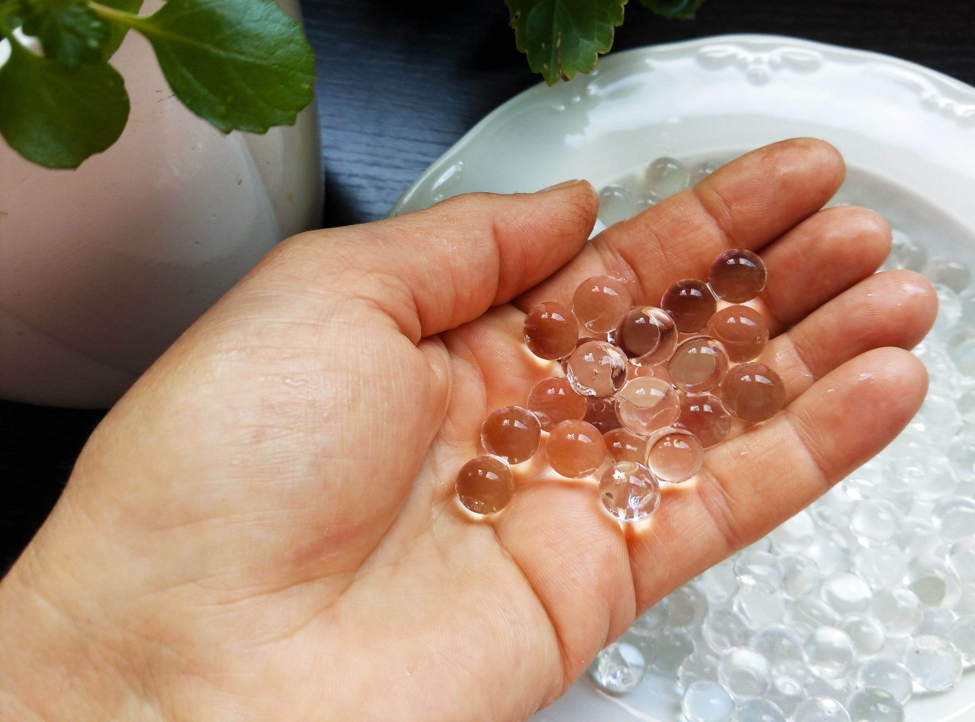Top Insights

Biomedical Field-
A hydrogel with a three-dimensional culture and high water content has recently been demonstrated to be capable of connecting with cells so as to engineer various tissues in both Vivo and Vitro. There is a crucial requirement for the building of sufficient qualities of three-dimensional tissues that are regenerative. The requirement is an artificially created environment that will enable the biological cells to interact or grow with their surroundings.
A recent group study made a report that new cross-linking chemistry was successful in the formation of hydrogels for a 3-D cell culture. This study utilized the click reaction called tetrazine norbornene. Benzylamine tetrazine moiety and a PEG functionalized together and were specifically chosen because of previous work that proved that there was a high reactivity towards the norborne. Ideal reaction kinetics, bio-orthogonality, and the photochemical patterning amenability made this particular hydrogel platform develop potential applications in various fundamentals including translational tissue engineering applications.
Self-Healing
One of the most outstanding properties of natural materials, such as bones, skin, and wood, is self-healing. This outstanding reality is an indication that hydrogels and their relationship to self-healing will open up numerous biomedical applications. Synthetic hydrogels are made to mimic biological tissues but most the time they, unfortunately, lack the ability to self-heal. This drawback could limit their utilization in some of the applications that require high stress.
This is one of the reasons why many researchers are dedicating a lot of effort and time to improve the mechanical properties of hydrogels which includes self-healing. The process of healing a crack in a natural system will normally contain an energy dissipation mechanism. Self-healing will occur during the presence of sacrificial bonds which can reform and break dynamically during or before the failure occurs.
To prepare any self-healing hydrogel, both non-covalent and covalent interactions must be present. A researcher noticed that the synthesis of novel hydrogels contained a reversible oxime cross-link. These particular hydrogels were able to provide autonomous healing because of their dynamic nature. The researcher prepared these hydrogels by copolymerizing them. This produced an efficient self-healing ability and a reversible gel-to-sol transition.
Drug Delivery
Hydrogels have proven very effective for drug delivery. The porous structure of a hydrogel can provide an excellent matrix for drug loading. At the same time, this matrix will also help to protect a drug from any hostile environment. In addition, the porous structure of a hydrogel can be controlled by simply varying the density of the gel matrix when cross-linking.
Drug carriers rely upon a release rate that primarily depends on the diffusion coefficient. The molecule of the hydrogel has the ability to be tuned in accordance with specific requirements. Biodegradability and biocompatibility can be obtained by constructing a design for certain physical and chemical structures for hydrogels. All of these properties show that hydrogels have a tremendous potential when it comes to being used for drug delivery.
A Pluronic, or Poloxamer, has been extensively used in pharmaceutical systems. One researcher and his team fabricated an injectable gel that was based on a Poloxamer to control and carry the release of an anaesthetic agent called lidocaine. Even though Poloxamer was available commercially and utilize by hospitals, it nevertheless still had limitations. These limitations were investigated by other researchers as they tried to find ways to use hydrogels to load various drugs into a gel matrix. Eventually, they were successful in creating an injectable loaded hydrogel to distribute the drug doxorubicin.
A different study was recently done by Yamauchi and his co-workers. In this study, a hydrogel which contained cationic substituents was prepared by means of a free radical polymerization. The research team applied an aqueous amount of Micaromica to a surface. When this was introduced to the hydrogels, it produced a strong adhesion into the interlayers of Micromica because of the intercalation of the cationic substituents that were included in the hydrogels network. The adhesive strength became extremely strong and it was able to support an unbelievable tensile load. The tensile load capacity was an amazing 10 kg before the water content ratio of the hydrogels decreased.
Another interesting research study was done by a researcher named Loessner and his team. They focused in on a (GelMa) gelatin methacrylamide based hydrogel. This researcher and his team analyzed them as a Vivo and Vitro spheroid-based model for issues with ovarian cancer. They did this so that they could efficiently reflect on the advanced stage of the disease. Hydrogels of equal diffusion, size, and physical properties were generated by utilizing a validation and controlled preparation protocol. These type of gelatin methacrylamide based hydrogels proved to be ideal for a reproducible, low cost, and
tailorable matrix for many of the 3-D cancer cell cultures. It proved to be a great alternative. It also helped to improve the understanding of various disease progressions on a cellular level as well as being able to screen anti-cancer drugs.
Summary
Hydrogels, in comparison with other types of biomaterials, have very distinct properties such as controllable swelling behavior, high water content, biocompatibility, as well as ease of handling. This makes them extremely attractive for hydrogels for biomedical applications. Based on their cross-link network and chemical structure, hydrogels have the ability to respond to various types of stimuli including light, pH, chemical, and thermal stimuli.
Recent studies discussed the different hydrogel swelling mechanisms and how their bulky structure would affect the properties of a swollen hydrogel under specific conditions. The hydrogels that were based on natural materials, such as polypeptides and polysaccharides, were studied in detail.
The fact that a hydrogel has a three-dimensional polymeric cross-link network that is able to swell and absorb a large amount of water is perhaps the main reason why it continues to be considered as a prime candidate for self-healing materials, a delivery vehicle for biomolecules and drugs, and tissue engineering. Obviously, there will be additional research in the future that will target how hydrogels will be able to achieve efficient and fast self-healing abilities, high mechanical strength, and different biological activities for a variety of biomedical purposes.
Recent Posts
Categories
- Accessories5
- Apps23
- Bollywood281
- Business32
- Cars8
- Celebrities62
- Cricket20
- Digital Marketing28
- Education549
- EML India52
- EML UK6
- Entertainment393
- Events46
- Featured4
- Finance10
- Fitness3
- Guest Posts187
- Health29
- Inspiration4
- Jobs Recruitment31
- Lifestyle37
- Merry Christmas9
- Mobile Phones25
- News35
- Prepapration Tips23
- Relationship4
- Relationship1
- Results87
- Social Media13
- Sports26
- Startups5
- Technology145
- Travel23
- Uncategorized2
- Web Design1
Related Articles
Benefits of Portable Wheelchair Ramps You Might Not Know!
Using a wheelchair can provide you with freedom of movement even if...
ByedumovliveJuly 2, 2021The taboo of mental Illness among youth in India
Mental illness has become a global issue on the precipice of overhauling...
ByedumovliveJune 18, 20214 Movies that tackle Mental Illness
Mental Health has been a central focal point in medicine but has...
ByedumovliveJune 18, 2021THE BEST PEMF MACHINES IN 2021
Introduction: We all know that PEMF therapy is getting more popular, and...
ByedumovliveMay 21, 2021












Leave a comment